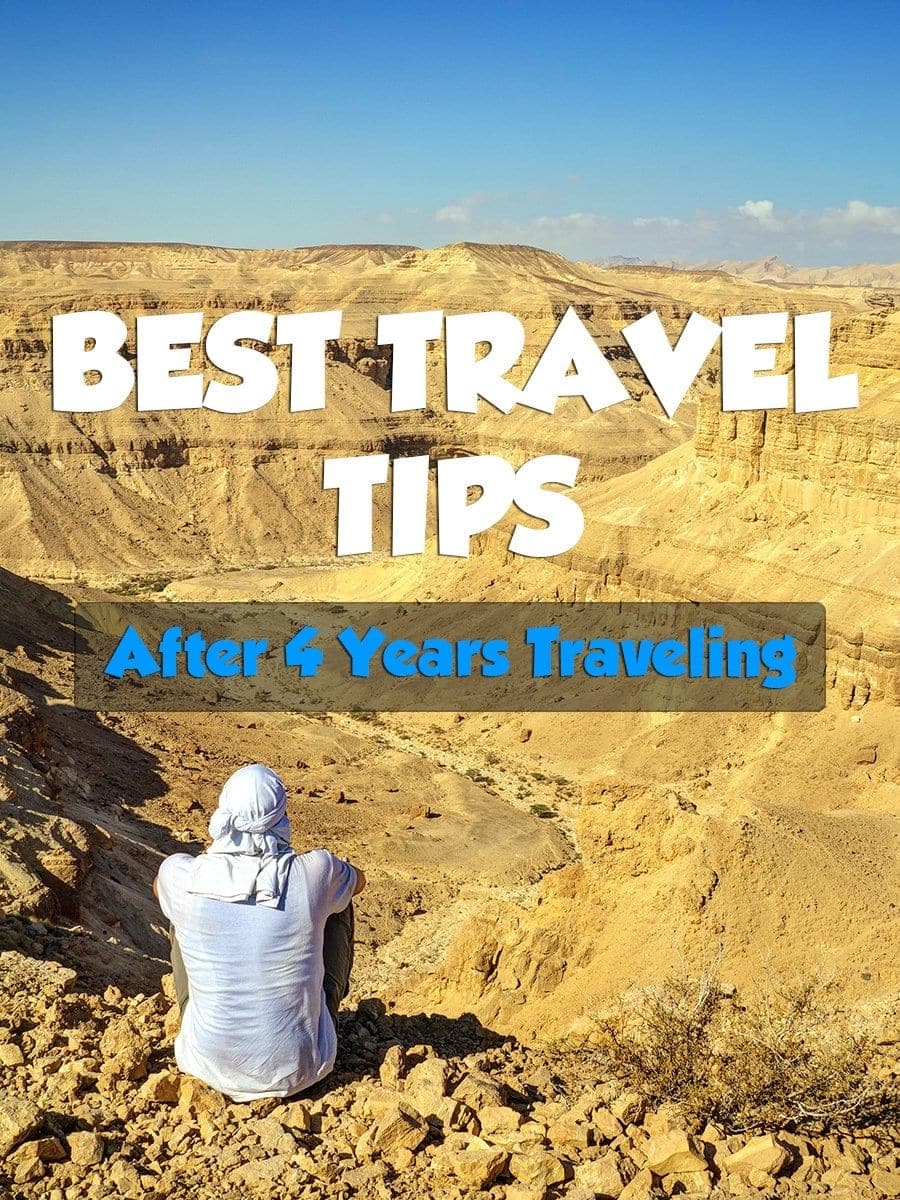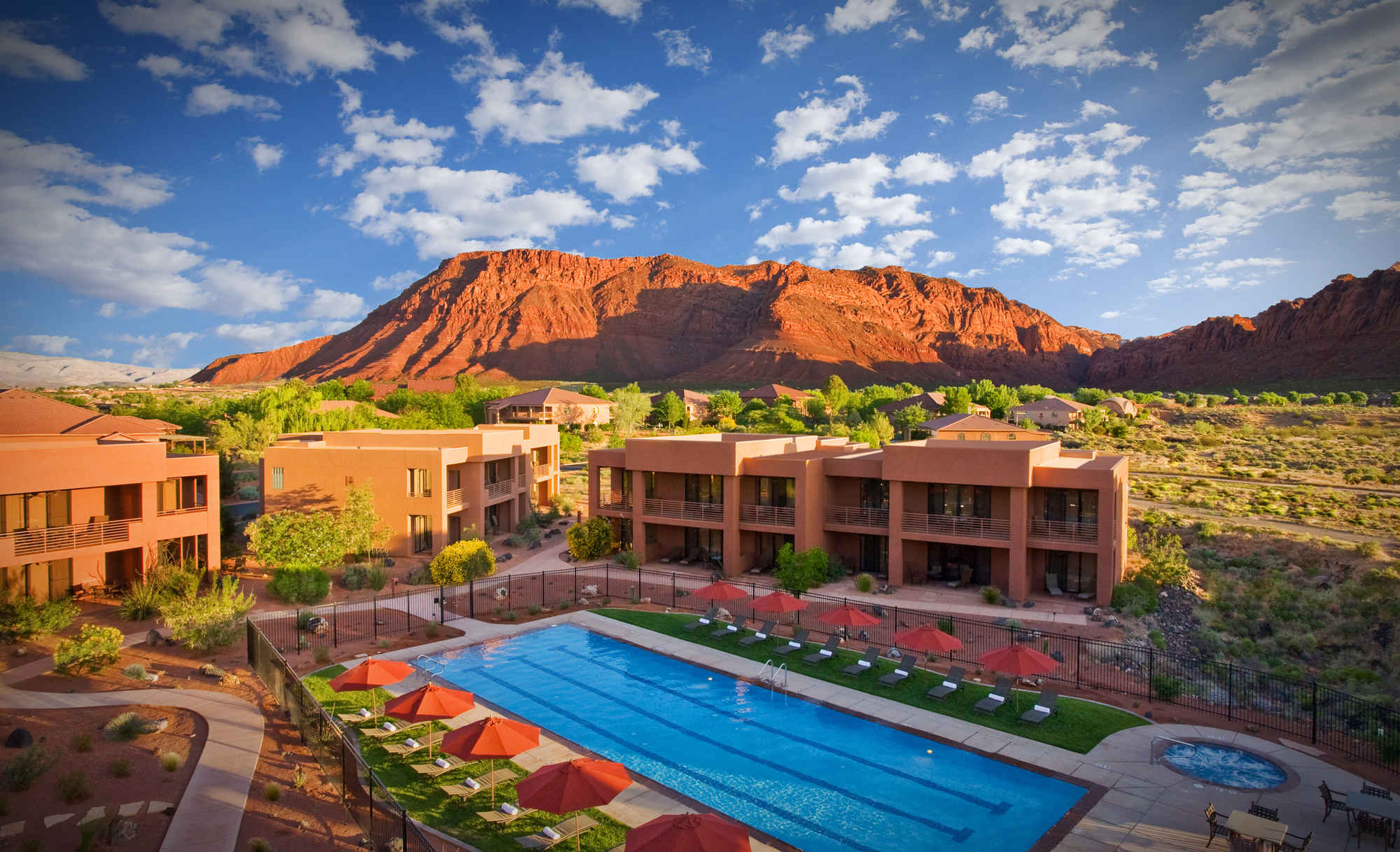Want to snorkel in a Bahamian blue hole, ring in the Ethiopian New Year, or taste maple leaf tempura in Japan? Whether you’re ready for an island, wilderness, or urban getaway, our editors’ list of ten Best Fall Trips – plus one reader’s choice – is sure to inspire your next autumn adventure.
—Maryellen Kennedy Duckett
Celebrate The Sound of Music‘s 50th Anniversary

Photograph by Jan Wlodarczyk/Alamy
Salzburg, Austria
Throughout 2015, fans of the 1965 classic movie The Sound of Music have been flocking to Salzburg to mark the world-famous film’s 50th anniversary. Join the party by attending Sound of Music-themed events, including the Sound of Music Gala 2015 (October 17) at the historic Felsenreitschule and the Sound of Music musical at the Salzburg Landestheater. (Check the website for performance dates.) Round out the celebration by visiting actual Sound of Music filming locations, including Nonnberg Abbey, founded in 714, and Mozart Bridge, named for native son Wolfgang Amadeus Mozart. Best bet: Pedal around the city and see key sites featured in the movie on Fräulein Maria’s Bicycle Tour Sound of Music route.
How to Get Around: From Salzburg Airport, take a taxi or public bus for the 15-minute ride to the city center and main train station. In the city, travel on foot and by bike, public bus, and subway. Buy a Salzburg Card for 24-, 48-, or 72-hour use of public transportation and admission to popular city attractions, plus various discounts.
Where to Stay: Although no Sound of Music filming took place inside the Hotel Schloss Leopoldskron, the palatial rococo estate, built in 1736 as the family home of the prince archbishop of Salzburg, was featured in the movie. Set designers used the palace’s Venetian Room as the model for the much larger ballroom in the von Trapp villa, and long shots of the estate’s former lakeside gazebo appear in the film. There are 12 suites in the historic palace and 55 rooms in the adjacent Meierhof building, renovated in 2014. Three of the Superior Doubles are billed as “Sound of Music” rooms due to the light, bright interiors and the lake and mountain views.
What to Eat and Drink: Opened around 1542 as a brewery and completely renovated in 2014, the iconic Sternbräu is one of Austria’s largest restaurant complexes. Austrian dishes such as fiakergulasch (meat and sausage goulash) and Salzburger nockerl (an egg soufflé dessert) are served in the multiple dining rooms, bars, and beer gardens. Buy tickets in advance for the Sternbräu’s Sound of Salzburg dinner show (through October 15), which includes musical selections from The Sound of Music, Mozart, and traditional Salzburg operettas.
What to Buy: Salzburg is the hub of Austria’s tracht (national dress) production. Get fitted for a dirndl, lederhosen, loden jacket, or other traditional costume at H. Moser. The family-owned custom tailor shop has been manufacturing trachten since 1928 and created the cast costumes for the Sound of Music musical at the Salzburg Landestheater.
Practical Tip: To easily access maps, travel guides, and other helpful information as you bike around the city, download Salzburg mobile apps to your smartphone or tablet.
What to Watch Before You Go: The five-disc Ultimate Collector’s Edition Sound of Music (20th Century Fox, 2015) includes the feature film remastered in HD, plus lots of bonus features, including a virtual map of the Salzburg filming locations and the new, hour-long documentary The Sound of a City: Julie Andrews Returns to Salzburg.
Helpful Link: Official Salzburg Travel Guide
Fun Fact: Actual filming of the Sound of Music “Sixteen Going on Seventeen” singing scenes took place inside a gazebo constructed on a Hollywood set. But that didn’t stop movie fans from trespassing on the grounds of Schloss Leopoldskron to see the glass gazebo used for exterior shots. Due to the heavy tourist traffic, the gazebo was disassembled, moved, and reconstructed in its present location in the gardens at Schloss Hellbrunn.
Staff Tip: Salzburg’s historic core is a hive of museums, shops, cafés—and visitors, especially in summer. Head just beyond the old city walls, however, and you come upon parks, lakes, and locally popular attractions. A standout: the Gössl Gwandhaus, or “Gössl cloth hall.” A showcase for the Salzburg-based Gössl clothing brand’s famously well-crafted dirndls, lederhosen, and boiled wool jackets, it has blended “as much tradition as possible and as much innovation as necessary” since the 1940s, in the words of founder Leopold Gössl. Housed in a centuries-old country palace surrounded by gardens and meadows, the Gewandhaus includes a small museum chronicling the evolution of dirndl and lederhosen fashion. Take a tour, then drink in the surrounding scenery over a glass of award-winning Austrian wine and servings of fresh asparagus, knödel dumplings, and Wiener schnitzel at the elegant terrace restaurant—a setting that one can imagine inspiring a composition by Salzburg-born composer Wolfgang Amadeus Mozart. —Jayne Wise, senior editor, National Geographic Traveler
Take a Nocturnal Wilderness Walk

Photograph by Auscape/UIG
Kangaroo Island, Australia
Only a 30-minute flight from Adelaide, Kangaroo Island, called KI by locals, is one of Australia’s most authentic and untouched places. Over half of the 1,705-square-mile island (about three times the size of Oahu) is covered in native, old-growth vegetation. Many of the resident creatures, including kangaroos, koalas, and possums, are nocturnal, so after dark is the best time to experience KI’s wild side. Hanson Bay Wildlife Sanctuary offers guided wildlife walks every night except Christmas. The 90-minute tours begin at sunset and include brief overviews of the island and the sanctuary, a former sheep farm that has been restored to close to its natural setting. “We are revegetating the land and providing a home to the many species that live naturally here, including tammar wallaby, western gray kangaroo, brushtail possum, southern boobook owl, echidna, Cape Barren goose, and many species of birds,” says sanctuary manager Kelly Bartlett. Added bonus: On clear-sky evening walks, guides provide a telescope to view the Southern Cross and other constellations.
How to Get Around: Driving is the most convenient way to travel around the vast island, which is 96 miles long and up to 34 miles wide. From Adelaide, drive about an hour and a half southwest to Cape Jervis to board the Kangaroo Island SeaLink for the 45-minute ferry ride to Penneshaw. Or take the 35-minute flight from Adelaide to Kingscote. Rent a car at the ferry terminal or the airport.
Where to Stay: Hanson Bay Wildlife Sanctuary has six beachside cabins on-site (four two-bedroom and two one-bedroom). All have kitchens and ocean views. Or indulge in the luxurious Southern Ocean Lodge, a National Geographic Unique Lodge, located minutes from the sanctuary. The secluded and sleek eco-resort is perched above the limestone cliffs at Hanson Bay. All 21 suites have floor-to-ceiling ocean views and an outdoor terrace.
What to Eat or Drink: The Oyster Farm Shop in American River processes and packages the harvest from the island’s largest commercial oyster farm. The bulk of the harvest is shipped off-island, but the farm does run a weekday lunch shack across the street from its processing sheds. Try freshly shucked or smoked oysters (harvested from the bay across the road), plus other local sustainable seafood (such as crayfish, abalone, whiting, and marron). Open Monday to Friday only, 11 a.m. to 3 p.m.
What to Buy: Kangaroo Island is home to the world’s only known colony of Ligurian bees. The Italian bees were introduced to the island in 1884 and have been protected by law since 1885. Visit the Island Beehive in Kingscote to tour the honey factory, purchase jars of organic honey and beeswax candles, and try locally made honeycomb ice cream or a Ligurian latte (made with bee pollen and sugar gum honey).
Cultural Tip: When driving, acknowledge passing motorists with the local “Kangaroo Island wave.” The greeting is subtle—a quick flick up of the index finger on whatever hand is holding the steering wheel—which is helpful, since you’ll need both hands on the wheel to navigate some of KI’s dirt roads.
What to Read Before You Go: KI native Tony Boyle’s sweeping family drama Kangaroo Island (Story Power Books LLC, 2013) offers an insider’s look, albeit fictionalized, at the real-world challenges and rewards of island life.
Helpful Links: Tourism Kangaroo Island, Visit Australia, and the South Australia Tourism Commission
Fun Fact: Kangaroo Island is named for its indigenous kangaroo, a smaller, darker version of its closest mainland relative, the western gray kangaroo. Found in the wild only on KI, the diminutive Kangaroo Island kangaroo typically stands three- to four-and-a-half-feet tall, while the tallest western grays can top out at seven feet.
Local Tip: Jon and Sarah Lark’s Kangaroo Island Spirits at Cygnet River is a must-visit. They serve an affogato with a generous amount of their honey and walnut liqueur (made from freshly roasted walnuts and Kangaroo Island’s famous Ligurian honey). Some say it tastes like a liquid hot cross bun! And try the limoncello and zenzerino—lip smacking! In the mood to eat? The Rockpool Cafe at Stokes Bay on the island’s north coast is only open during summer (and if the fishing is good you might find the Gone Fishing sign on the door), but the cones of fish, chips, and seafood are consistently satisfying. There is plenty of seating both inside and out, but the best bet is to take your meal to the glorious white sandy beach. Make sure you don’t just stop at the car park but follow the To Beach sign, walking through the Picnic at Hanging Rock-style rock formations. You have to watch your head and your chips, but the beach at the other end is breathtaking. —James Baillie, owner, Southern Ocean Lodge, a National Geographic Unique Lodge
Formula One and Day of the Dead

Photograph by Guillermo Arias
Mexico City, Mexico
October 31-November 2
Fast and furious Formula One (F1) motorcar racing returns to Mexico City for the first time since 1992 with the Mexican Grand Prix on November 1, the Day of the Dead. F1’s open-cockpit, single-seater-style racing isn’t as well known in the U.S., yet has a bigger global audience than NASCAR and the IndyCar series combined.
On November 1, watch the top-flight field maneuver around Mexico City’s Autódromo Hermanos Rodríguez F1 circuit at speeds topping 200 miles an hour. Before or after the racing (October 31 to November 2), experience authentic Día de los Muertos (Day of the Dead) traditions in San Andrés Mixquic, a village located in the far southeastern reaches of Mexico City. The celebration includes Day of the Dead altar competitions and displays, as well as a bustling marketplace stocked with foods, crafts, and festival items such as sugar skulls and pan de muertos (bread of the dead). The highlight is the November 2 candlelight procession through town to the cemetery. Locals carrying a cardboard coffin lead the way, followed by families who will spend the night keeping vigil at their loved ones’ newly decorated graves.
How to Get Around: Take a taxi de sitio (registered, radio-dispatched taxi) or a turismo (an unmarked “tourist” taxi arranged through your hotel) from the airport to the center city. In the city, the extensive metro system is the safest, most convenient, and affordable (about $.30 per ride) mode of transportation.
Where to Stay: Attention to detail is the mantra at Las Alcobas, a luxurious boutique property in the city’s elegant Polanco neighborhood. The 35 rooms and suites are styled with handcrafted rugs, original artwork by Mexican artists, and leather-paneled walls. The in-room minibar is stocked with complimentary locally sourced snacks. The two-bedroom suites and three penthouse suites have wraparound terraces.
What to Eat or Drink: At Biko in the Polanco district, chefs Bruno Oteiza, Mikel Alonso, and Gerard Bellver fuse traditional Basque cooking from northern Spain with local Mexican ingredients. The resulting Basque-Mexican cuisine (what the chefs call cocina gachupa) is featured on two menus: traditional and modern. Choose the tasting menu for the full Biko experience, an avant-garde mix of small plates such as foie gras cotton candy, Mexican pork jowl and tomato, and fried apple with olive and pepper ice cream.
What to Buy: Tienda MAP (Museo de Arte Popular stores) sell artisanal and fair-trade Mexican handicrafts. Featured artists include Urbano Fernández Chávez of Oaxaca, who raises silkworms and, with his family, spins and weaves the silk into one-of-a-kind rebozos (shawls).
What to Watch Before You Go: 1 is an adrenaline-charged documentary detailing the glamour and danger of Formula One Grand Prix racing during the sport’s late 1960s golden age.
Helpful Links: Mexico Tourism Board and Formula 1: Mexico City
Fun Fact: Mexico’s Grand Prix venue, the Autódromo Hermanos Rodríguez, located east of Mexico City, is named for national racing legends and brothers Ricardo and Pedro Rodríguez. The brothers’ prowess in Formula One racing helped build the sport’s fervent local fan base. Tragically, Ricardo and Pedro died a decade apart (1962 and 1971, respectively) in racing accidents.
Staff Tips: Mexico City quickly became one of my favorite cities—I was surprised at how hard I fell for it. For a visitor, there is so much culture and history, beautiful green space, and cool neighborhoods. There are two local restaurants that I really love. One is Contra Mar, the best people-watching spot in town for lunch, with fabulous seafood. It’s hard to pick between a sidewalk table in the sun and the lively tables inside. For dinner, I dream of Rosetta, which serves perfect Italian dishes in a restored mansion in Roma. Try to sit in the beautiful indoor garden area downstairs. —Annie Fitzsimmons, @anniefitz, National Geographic Urban Insider
I let the artwork of Frida Kahlo and Diego Rivera guide my week in Mexico City last year: His epic mural in the National Palace introduces hundreds of years of history, while her half-used paint tubes still wait in front of a mirror for another fierce self-portrait in their house, La Casa Azul (Blue House) in Coyoacan, once a separate suburb known for attracting intellectuals and exiles like Leon Trotsky in the 1920s. Leave time for Xochimilco’s Museo Dolores Olmedo in the old hacienda of Diego’s patron, where Mexican hairless dogs roam the grounds, then float in colorful gondola-like boats called trajineras down World Heritage canals for a glimpse of the area’s pre-Hispanic past, which inspired their artwork. —Christine Blau, @Chris_Blau, researcher, National Geographic Traveler
Inaugural World Indigenous Games

Photograph by Felipe Dana, AP
Palmas, Brazil
October 23-November 1
While controversy swirls around preparations for the 2016 Summer Olympic Games in Rio de Janeiro, the city of Palmas in central Brazil has been quietly gearing up to host a smaller (and arguably much cooler) event—the first World Indigenous Games. The games have taken place in Brazil for more than a decade, but this is the first time indigenous athletes from any country are welcome to participate.
Nearly 25 countries are expected to send teams to showcase traditional indigenous games such as the lance (javelin) throw, the log race, and tug-of-war; “Western” soccer; and demonstration events including xikunahity (a soccer-like game played with the head only).
Beyond the games, see the spectacular dunes, waterfalls, and canyons of Jalapão, and visit 200-mile-long Bananal Island, one of the world’s largest river islands and home of the indigenous Karajá and Javaé peoples.
How to Get Around: Palmas is a relatively new, planned city, founded in 1989 as the capital of Brazil’s newest state, Tocantins. The airport is located 18 miles south of the city center. You can take a taxi or public bus from the airport to the city center. However, if you want to explore the surrounding area, renting a car at the airport is the best option.
Where to Stay: In Brazil, a pousada (Portuguese for inn) can be anything from a basic bed-and-breakfast to a luxury eco-lodge. In general, pousadas offer a more authentic, local experience than hotels, and typically include breakfast. Two convenient Palmas options are Pousada dos Girassois and Pousada das Artes, a pousada-style hotel.
What to Eat or Drink: Local dishes to look for in Tocantins include arroz de pequi (rice made with the pulp of pequi, a green-yellow fruit the size of a small orange); biscoito de polvilho (a biscuit made with tapioca flour); and peixe na telha (fish cooked in a clay baking plate). In addition to pequi, indigenous fruits to try include cupuaçu (a melon-size superfruit in the cacao family), açai, and cajá (a sweet, mini-mango-like superfruit packed with vitamin C).
What to Buy: Female artisans in the Tocantins village of Mumbuca are known for their “golden grass” handicrafts. Golden grass (Syngonanthus sp. or capim dourado in Portuguese) is the stem of a small white flower native to the Jalapão region east of Palmas. Dried and braided stems are woven into handbags, necklaces, earrings, mandalas, pots, ornamental folk art, and other items.
What to Watch Before You Go: The short World Indigenous Games promotional video produced by Brazil’s Ministry of Tourism with English subtitles provides background on the event and includes brief interviews with the games’ founders, Inter Tribal Council (ITC) members and brothers Carlos and Marcos Terena.
Helpful Links: World Indigenous Games, Visit Palmas, and Visit Brazil
Fun Fact: The Bororo, or Boe, are among the 24 Brazilian indigenous groups participating in the games. Known for their prowess in tug-of-war, the Bororo have several distinct rituals, including wearing macaw feather headdresses and adorning their faces with drawings made of clay, coal dust, sap, and red-orange urucum (a coloring agent made from the seeds of an annatto tree).
See the World’s Largest Concentration of Blue Holes

Photograph by William Gray
Andros, Bahamas
Andros is only 30 miles (a 15-minute flight) west of Nassau, yet for now this pristine island paradise remains a bit of a Bahamas secret. The “island” consists of a 104-mile-long archipelago of small islets and mangrove-covered cays. Home to the second largest barrier reef in the Western Hemisphere and the Caribbean’s largest unexplored wilderness, Andros is best known for its silvery bonefish and the world’s largest known concentration of blue holes (submerged caves). A large number of the underwater caves can be found in Blue Holes National Park, one of five national parks on Andros. “The first experience of a blue hole is spiritual, and then you come to appreciate [that] they are natural wonders of the world,” says Peter Douglas, executive director of ANCAT (Andros Conservancy and Trust), a local nonprofit conservation organization. “Imagine walking onto a big circular ocean of water in the middle of the forest … [Blue holes] are portals back to an alien world under the ocean.”
How to Get Around: Fly into Andros International Airport in Andros Town (also known as Fresh Creek), the commercial hub of North Andros. There is no public transportation, so car rentals, taxis, and boats are the only options. Queen’s Highway runs along the east coast of the three major islands. This eastern area is home to most of Andros’s lodging, fishing, and tourist services, including blue hole trips, boating, bonefishing, and Andros Barrier Reef snorkeling tours.
Where to Stay: Small Hope Bay Lodge in Fresh Creek has 21 rustic, beachfront cabins hand-built from local coral rock and pine. Opened in 1960, the comfortable, family-run lodge is all-inclusive (meals, drinks, and activities) and designed for total relaxation. The lack of in-room television or Internet access leaves more time to bike, kayak, windsurf, or nap in a hammock. Another Fresh Creek option is Sunset Point Houseboat. Moored in the tidal waters, the private houseboat has three bedrooms and a wraparound deck. Rent kayaks and snorkel gear on-site to explore inland blue holes, including Helios, which only is accessible by boat via Fresh Creek.
What to Eat and Drink: On Mangrove Cay, the middle of Andros’s three major islands, stop at fishing guide Shine Greene’s waterfront Conch Shack for fresh conch ceviche and a cold bottle of Kalik, self-described “beer of the Bahamas.” In Davis Creek, just north of Andros Town on North Andros, sip tropical drinks on the oceanfront dock at Brigadiers Restaurant.
What to Buy: Tour the Androsia batik factory in Fresh Creek to see 100 percent cotton fabric hand-printed with nature-inspired designs (such as shells, fish, and flowers) and hand-dyed in vibrant colors (including magenta, green mango, fire coral, and deep aqua). Buy the Bahamian batik fabric by the yard or as clothing, pillows, drawstring backpacks, tablecloths, and more at the factory outlet store. Take a factory tour, or sign up in advance for a batik lesson.
What to Watch Before You Go: This webisode from the National Geographic Channel’s Diving the Labyrinth series offers a quick overview of Bahamian blue holes and an inside look at an Andros underwater cave.
Practical Tip: Pack insect repellent, long-sleeved shirts, and long pants to help ward off Andros’s big-three biting bugs: mosquitoes, sand flies, and “doctor” flies (greenhead horseflies). To dive the deeper blue holes, advanced scuba certification is required.
Helpful Links: The Islands of the Bahamas, Andros Conservancy and Trust, and National Geographic Explorers Blue Holes Project
Fun Fact: Blue holes can extend hundreds or thousands of feet down in a labyrinth of passages. There are several different kinds of these underwater caves, collectively known as blue holes due to the deep-blue hue often produced when the sky reflects on their surface water. Some blue holes may appear muddy or dark on the surface, yet the water below is typically very clear.
Foliage, Festivals, and Food

Photograph by Kazuhiro Nogi, flickr
Osaka, Japan
Autumn combines three of Osakans’ favorite things: food (the city is known as Japan’s food capital); colorful ginkgo and maple leaves; and dozens of festivals and special events, including the Osaka Marathon (October 25). The must-see fall festival is Danjiri Matsuri (“float-pulling”), a 300-year-old competition pitting neighborhoods across Japan. September 13-14, watch as teams of 500 to 1,000 men use ropes to pull and steer intricately carved, wooden danjiri (traditional floats) through the narrow streets. Each float is topped with dancers, musicians, and a Daiku-gata (director), who shouts out instructions to keep the careening, four-ton float and the crew from toppling on tight turns.
“Osaka could be seen as slightly chaotic and disorienting at first,” says Aria Aoyama, international public relations manager for the Osaka Convention and Tourism Bureau, “but, in my eyes, it is a living treasure box; [it] just takes a bit of digging beneath its surface. And it is in fall that you get the best of everything, so you can’t go wrong.”
How to Get Around: Fly directly into Osaka’s Kansai International Airport or ride the bullet train west from Tokyo (2 hours and 30 minutes) to Shin-Osaka Station. Trains connect both locations to the city center. Travel in and around the city by subway, waterbus, and the Japan Rail (JR) Osaka Loop Line. Buy a two-day Osaka Amazing Pass for unlimited transportation and one-time admission to nearly 30 attractions on two consecutive days.
Where to Stay: Hotel Minoo, located at the entrance to forested Meiji’no Mori Mino Park, has a rooftop onsen (hot spring) Sky Bath, plus an indoor swimming pool and bowling alley. From the hotel, follow the park’s main hiking trail along the Minoo River to see brilliant fall foliage, Ryuanji Temple, and Mino Waterfall. The park entrance is less than 30 minutes from Osaka by train.
What to Eat or Drink: Osakans’ historical obsession with food goes into overdrive during fall harvest season. Sample the region’s fresh bounty (vegetables, beef, and seafood) at a kappo (a Japanese mash-up of “cook” and “cut”) restaurant. Osaka is the birthplace of kappo, a casual and conversational culinary style where patrons sit at the counter and watch the chefs prepare their meals. Several kappos are located on Hozenji Yokocho, an alley lined with Washoku (Japanese cuisine) restaurants.
What to Buy: Osaka lays claim to being the first city in Japan to import and make Amechan (candy). One of the first confectioneries, Toyoshita, has been producing its signature vegetable- and fruit-flavored sweets since 1872. Each candy is shaped like its fruit or vegetable flavor, including melon, carrot, radish, and pumpkin. Watch the production process and buy freshly made candies and throat lozenges at the Toyoshita factory located near the JR Bishoen Station.
Practical Tip: “Amechan taberu?” (“Do you want a candy?”) is a common, friendly greeting in Osaka. If a local offers you a piece of candy, accept it with a smile.
What to Read Before You Go: Download the Osaka Government Tourism Bureau’s free English-language official Osaka guidebook and city and area maps (including a railway route map).
Helpful Links: Osaka Convention and Tourism Bureau and Japan National Tourism Organization
Fun Fact: Fall is the prime season to try the traditional Meiji’no Mori Mino treat: Momiji (maple leaf tempura). Vendors stationed along the park’s main hiking trail deep-fry bright red and orange maple leaves in sweetened tempura batter to create the portable and crunchy snack.
Visit the Newest U.S. World Heritage Site

Photograph by Richard Nowitz, National Geographic Image Collection/Alamy
San Antonio, Texas
Built in the 18th century by Spanish Franciscan priests, the five San Antonio Missions—Concepción, Espada, San Antonio de Valero (the Alamo), San José, and San Juan—were designated on July 5 as a UNESCO World Heritage site. The missions, which represent the largest collection of Spanish colonial architecture in the U.S., are the newest addition to the World Heritage List in the United States and the first in Texas. “[The missions] are very much a part of what continues to shape the community and personality of San Antonio,” says Susan Snow, an archaeologist for San Antonio Missions National Historical Park who has been coordinating community efforts to secure World Heritage status since 2007. “To bike down the Mission Reach of the River Walk in the cooling weather and see the distinct architecture from afar or attend a mariachi mass in the heart of one of its churches really pulls you into the soul of locals honoring their heritage.”
How to Get Around: Walking and biking are the best ways to visit the missions, which were built in two- to three-mile increments (north to south) along the San Antonio River. The Mission Reach section of the famous San Antonio River Walk includes an eight-mile hiking and biking trail that runs from just south of downtown to Mission Espada. Designated portals connect the trail to the four southernmost missions: Concepción, San José, San Juan, and Espada. Parking and bike-share stations are available at each portal. The Alamo is located north of the other missions, along the downtown section of the River Walk. By car, follow the Mission Trails route (look for the green shepherd’s crook light poles) connecting all five missions.
Where to Stay: Hotel Emma is the latest edition to Pearl, a culinary-focused urban village centered in and around the historic 1881 Pearl Brewery complex. Scheduled to open October 1, the 146-room luxury hotel is conveniently located next to the River Walk in Midtown. Common areas and some guest rooms (including the top-floor suites with private terraces) include original brewery design elements such as industrial equipment reengineered as light fixtures, cast-iron spiral staircases, and turn-of-the-century exposed brick walls.
What to Eat or Drink: Chef Jeff Balfour’s new Southerleigh (opened April 2015) celebrates San Antonio and Texas Gulf Coast tastes and traditions. The fine-dining brewpub is named for the predominantly southerly winds on the Texas coast and is housed in the historic Pearl Brewery, marking the first time since 2001 that beer is produced on-site. Mains (such as pan-seared grilled snapper, seafood boils, and smothered Parker Creek Ranch fried chicken with red-eye gravy) are served family style. Best deal: The Cellarman’s Lunch Pail offers an entrée and side for $12 from 11 a.m. to 2 p.m. daily. Closed Sundays.
What to Buy: Brick Marketplace at Blue Star Arts Complex hosts funky and fun Sunday (12 to 5 p.m.) and first Friday (7 p.m.) markets. Dance, eat, and browse the eclectic selection of items, including vintage vinyl records, clothing, and sand art terrariums.
Practical Tip: Plan to visit Mission San José and Mission Concepción in time for one of the day’s free guided tours. The other missions may offer tours if staff is available. Check at the information center when you arrive.
What to Watch Before You Go: This 50-minute video (Bennett-Watt Media, 2014) provides an overview of how Spanish frontier missions helped to shape Texas and the American West.
Helpful Links: San Antonio Missions, San Antonio Convention and Visitors Bureau, and Travel Texas
Fun Fact: The Alamo complex is a Texas state historic site, but the other mission churches are active Catholic parishes. Except for during weddings and special events, visitors dressed in proper church attire are welcome to respectfully attend weekend Mass. (Check the Archdiocese of San Antonio website for times and information.) Most Sundays, Mission Concepción—the oldest unrestored stone church in the U.S.—and Mission San José offer a bilingual (Spanish and English) Mass accompanied by mariachi music.
Staff Tip: Stay at a hotel near the River Walk (I liked the Marriott San Antonio Riverwalk), take the Rio San Antonio cruise to get acclimated to the area, then explore it on foot in the evening when it’s cooler. Looking for a spot to dine with less of a touristy vibe? Try the Alamo Street Eats. The gathering of three to four food trucks opens at 5 p.m. daily and includes menu items like the Attaboy Burger (ridiculously good) and the Winner Winner Chicken Dinner (fried chicken and waffles that are the perfect mix of salty and sweet). A live DJ spinning hits from the ’80s and ’90s is bound to get you grooving in your chair. The recent addition of the San Antonio Missions to the list of Unesco World Heritage sites also makes it a reason to explore. Mission Concepción is probably the best preserved and has a few shady spots for catching your breath, along with information boards to help you understand the history. —Heather Greenwood Davis, @GreenwoodDavis, National Geographic Traveler contributor
Learn About Whaling History “In the Heart of the Sea”

Photograph by Claudia Uripos, eStock Photo
Nantucket, Massachusetts
The upcoming Warner Bros. film In the Heart of the Sea (scheduled release in December 2015) chronicles the 1819 tragedy of the whaleship Essex. Survivor stories from the Nantucket-based ship, which was rammed and sunk by a sperm whale in the South Pacific, inspired Herman Melville’s epic tale Moby-Dick. Discover the true story and learn about the island’s whaling tradition at the Nantucket Whaling Museum’s major new exhibition “Stove by a Whale: 20 Men, 3 Boats, 96 Days.” The exhibit (open through November 2016) includes props and period costumes from the film, plus interactive experiences. “The sound of the water echoes in the hall to help people think about what it might sound like to be out at sea for that long,” says Lindsay Scouras, manager of communications at the Nantucket Historical Association. “There’s also a replica whaleboat you can step in. A screen in front projects quotes from some of the survivors’ accounts, and the surrounding walls look like water. The whole experience helps you understand what it might have been like to be out in the ocean with nothing in sight … how quiet and lonely that must have been.”
How to Get Around: Nantucket is about an hour south of Hyannis via the Hy-Line or Steamship Authority high-speed ferry. The Whaling Museum is downtown, within easy walking distance of both ferry-landing docks. To travel beyond downtown, rent a bike, ride TheWAVE public shuttle bus (through October 12), or use taxis.
Where to Stay: The 11-room Anchor Inn, built in 1806 by Captain Archaelus Hammond of the whaleship Cyrus, is run by owner-innkeepers Charles and Ann Balas. The couple purchased the downtown inn (and the two whaleboat oars and harpoons inside) as their home more than 30 years ago. Rooms are named for various whaling ships. Guests can view “their” ship’s actual log at the Nantucket Historical Association’s Research Library and Whitney Gallery. Best bet: Ask Charles to share his recipe for the muffins (flavors include blueberry, cranberry, and apricot) served daily in the inn’s private side garden.
What to Eat or Drink: Fog Island Cafe is an unpretentious and affordable (for Nantucket) breakfast and lunch spot close to the ferry terminals and the Whaling Museum. Breakfast (try the Bacodo, a bacon, avocado, and cheese omelet) or lunch (including a Nantucket Fishcake sandwich with side) will run you $20 or less. Opens 7 a.m. daily and closes at 2 p.m. Monday to Saturday and 1 p.m. on Sunday.
What to Buy: The Nantucket Historical Association Museum Shop stocks a number of whaling and whale-related items, including the documentary Nantucket: A Film By Ric Burns (Nantucket Historical Association, 2011) and a reproduction “whale tooth” scrimshaw made from hand-inked and engraved ivory polymer.
Practical Tip: The 90-minute “In the Heart of the Sea” walking tour leaves from the Whaling Museum lobby daily at 2:15 p.m. Tours are limited to 20 people, and tickets are sold on a first-come, first-served basis ($10 for adults, $8 for seniors and students). To avoid being disappointed, purchase tour tickets when the museum opens at 10 a.m.
What to Read Before You Go: The upcoming Warner Bros. movie is based on In the Heart of the Sea: The Tragedy of the Whaleship Essex (Penguin, 2000), written by Nantucket resident Nathaniel Philbrick and winner of the 2000 National Book Award for Nonfiction.
Helpful Links: Nantucket Historical Association, Nantucket Island Chamber of Commerce, Nantucket Visitor Services, and Nantucket Chronicle
Fun Fact: One of the few known artifacts to survive the Essex disaster is a piece of twine wound by crewmember Benjamin Lawrence. While lost at sea for 96 days, Lawrence added little pieces of hair and fibers to the twine. The artifact is displayed in an ivory frame at the Whaling Museum.
Staff Tip: Hop on the free shuttle from the visitors center downtown for a ride to Cisco Brewers, where you can take a tour of the island brewery and sample small-batch craft beers, including Whale’s Tale Pale Ale and Grey Lady Ale. The owners of the brewery also run the Nantucket Vineyard and Triple Eight Distillery, if wine or spirits are more to your liking. The family-friendly brewery provides a convivial outdoor scene with picnic tables, live music, and food trucks selling lobster rolls and tacos. Closer to town, time your walk to Jetties Beach for sunset. Once there, pull up a chair and dig your toes in the sand at Jetties Beach Bar & Restaurant, a festive, open-air spot with acoustic guitar music, seafood, and frozen drinks. Then focus your gaze on the water and watch the fiery sun slip into the horizon and turn the sky into a kaleidoscope of colors. —Susan O’Keefe, @sokeefetrav, associate editor, National Geographic Traveler
New Year’s Day 2008 Celebrations

Photograph by ROBERTO SCHMIDT
Addis Ababa, Ethiopia
September 11
In Ethiopia, this September 11 is Enkutatash (“gift of jewels”), otherwise known as New Year’s Day 2008. The East African nation follows its own calendar, known as the Ge’ez, which is based on the ancient Coptic calendar. A different interpretation of when the birth of Jesus was announced accounts for the more-than-seven-year gap between the Ge’ez and the Gregorian calendar. And since Enkutatash traditionally coincides with the end of the rainy season on the Horn of Africa, as well as the Feast of John the Baptist, there are three reasons to celebrate on New Year’s Eve.
The party is particularly spirited in and around the capital city, Addis Ababa, where residents light bundles of sticks called chibo to make neighborhood bonfires. “Ethiopian holidays are the best—Everything is centered around food, family, and friends,” says Xavier Curtis, co-founder with Eliza Richman of AddisEats. “Every holiday is celebrated with meat, either raw or cooked, at home or at a butcher house. Since the New Year’s celebrations do not have as much of a religious aspect to it, this is one of the best times of year to get out and enjoy the festivities with everyone else. They won’t be at church or at home; they’ll be out eating and drinking.”
How to Get Around: Arrange airport transfers, local transportation (taxi or car service), and guided tours or private tour guides through your hotel. Hiring a taxi driver for a full day (about $75) is the most convenient option. For an insider’s view of the city, book the AddisEats full-day tour (9 a.m. to about 7 p.m.). Itineraries are customized and can include traveling by public transportation and visiting markets and restaurants catering to locals.
Where to Stay: Sleek, modern hotels are springing up across Addis Ababa as part of the city’s ongoing construction boom. The vintage Hilton Addis Ababa isn’t shiny or new, yet it does offer three essentials: a convenient location near the airport, city center, Ethnological Museum, and Ethiopia’s National Museum, which houses extraordinary paleontological artifacts such as the famous bones of human ancestor “Lucy”; secure and well-manicured grounds, including an outdoor pool; and reasonable rates (upgrade to an executive floor for expansive city or mountain views).
What to Eat or Drink: Sample a wide variety of local Ethiopian food, such as spongy injera (an unleavened pancake) made with teff flour, a grain native to Ethiopia, on an AddisEats food tour. The traditional New Year’s dish to try is doro wat (chicken stew). And while the national brew—fresh-roasted Ethiopian green-bean coffee—is prepared and served quickly at small jeubeuna bunna (coffee stands) and coffeehouses, make time for at least one Ethiopian coffee ceremony. The elaborate ritual can take two to three hours, and involves roasting, grinding, brewing, and drinking (three cups of progressively weaker) coffee.
What to Buy: Coffee beans, scarves, and other textiles made from hand-spun and handwoven cotton, and tightly coiled grass baskets and mats are among the locally produced items available in Addis Ababa markets. The biggest, the Merkato (New Market), is one of Africa’s largest open-air marketplaces: a mini-city jam-packed with vendors, shoppers, and a dizzying blend of odors, sights, and sounds. For safety’s sake, go with a local guide.
Cultural Tip: Traditionally, Ethiopians will not eat before inviting others gathered with them to join in. Honor the tradition by inviting your guides and drivers to eat with you by saying, “Enibla—Let us eat.”
What to Read Before You Go: The “gift of jewels” celebration commemorates the jewels the Queen of Sheba received upon returning home (thought by many scholars to be the Kingdom of Axum in Ethiopia) after visiting King Solomon in Jerusalem. Tosca Lee’s novel The Legend of Sheba: Rise of a Queen combines myth, biblical references, and detailed research to tell Sheba’s tale.
Helpful Links: AddisEats Food Tours & Culinary Adventures and National Geographic Ethiopia Guide
Fun Fact: Gursha is the Ethiopian tradition of feeding another person by hand. Family members, friends, and even strangers commonly place small handfuls into each other’s mouths as an act of kindness. If someone makes a gesture to feed you, graciously accept the food as you would a welcoming hug or other friendly greeting.
Staff Tip: Addis is a city in perpetual motion, everyone walking, driving, and socializing late into the night. Their fuel? The drink said to have been born in Ethiopia: coffee. Cultivated in the highlands for centuries (and still growing wild in some regions), coffee plays a central part in daily life here, most notably in coffee ceremonies visitors can experience at hotels, guesthouses, some restaurants, and local markets. Join one, and you’ll watch a woman in traditional dress roast the coffee beans in a brazier, then grind them by hand with a mortar and pestle. She’ll deposit the grounds in a high-necked ceramic pot called a jebena to boil. When the coffee is ready, the hostess will pour it into tiny ceramic cups for consumption alongside snacks such as roasted barley, peanuts, and popcorn—a full-bodied taste of ancient Ethiopia. —Jayne Wise, senior editor, National Geographic Traveler
Dijon International Gastronomy Fair

Photograph by Andrew Bain/Lonely Planet Images
Dijon, France
October 30-November 11
First held in 1921, the Dijon International Gastronomy Fair is Burgundy’s biggest event and one of the six largest fairs in France. The combination trade fair and culinary festival attracts some 200,000 professional and amateur chefs, restaurateurs, and foodies from around the world. See cooking demonstrations, attend workshops, and sample wines and foods from French and international vendors, including this year’s featured country, Chile. The schedule also includes multiple top chef competitions, including the National Grand Prize of Gastronomy in pastry and chocolate (November 2), and, for the first time, honors for the best lemon meringue pie in France (November 7). Also new for 2015: Preview the future Cité International de la Gastronomie scheduled to open in 2018 on the grounds of Dijon’s former General Hospital. The culinary hub will become the fourth such complex in France (the others are in Lyon, Rungis, and Tours). Plans call for multiple exposition rooms and restaurants, a wine pavilion, a hotel and residential housing units, a multiplex cinema, and more.
How to Get Around: Dijon is only an hour and 40 minutes from Paris by train. The closest airport is Dole-Jura Airport, located about 30 miles southeast of Dijon. If arriving at the airport, take a taxi or bus to the Dole Ville Train Station to connect to the Dijon-bound train. In Dijon, walk and use the efficient public bus system.
Where to Stay: The atmospheric Hotel Philippe le Bon has 41 rooms spread over three period residences, the oldest built in the 15th century. Request a room facing the interior Gothic courtyard for the quiet. Or, if climbing winding stairs isn’t an issue, book a junior suite in the oldest building for the timbered ceilings and historic charm.
What to Eat or Drink: The region’s signature aperitif is Kir, named for Félix Kir, the popular mayor of Dijon who died in 1968. A classic Kir is made with crème de cassis (black currant liqueur) and Aligoté, Burgundy’s second white wine after Chardonnay. Variations include substituting de mûre (blackberry) or de pêche (peach) for the crème de cassis. The most popular twist on the original is the Kir Royale, made with ice-cold sparkling crémant de Bourgogne or champagne instead of Aligoté, and served in a champagne flute.
What to Buy: The original Maille Moutarde boutique, opened in 1845, isn’t the most affordable place to buy Dijon’s famous mustard (local supermarkets have the best prices). It’s worth the trip, however, for the samples and the selection: dozens of different mustards, including apricot and curry spices, fig and coriander, and gingerbread and chestnut honey. Purchase Maille on tap (it’s expertly hand-drawn into earthenware jugs); mustard gift boxes and accessories; plus vinegars, oils and dressings, and other Maille items. Packing and shipping available. Closed Sundays.
What to Read Before You Go: Renowned food writer M. F. K. Fisher’s evocative memoir Long Ago in France: The Years in Dijon captures the Burgundian passion for food and wine, and for sharing both.
Helpful Links: Dijon Tourism and Burgundy Tourism
Fun Fact: Dijon’s good-luck charm and symbol is La Chouette, the small owl carved into a pillar on the left side of Église Notre-Dame (Church of Notre Dame). To help visitors navigate their way between 22 of the city’s historic sites, the Tourist Office created the Parcours de la Chouette (Owl’s Trail). The route is marked by little owls embedded in the pavement. Pick up a trail map at the Tourist Office or download the app, and be sure to rub the original Notre Dame owl (trail stop no. 9) for good luck.
Staff Tip: Dijon has long been famous, of course, for its mustard. Stop by La Moutarderie Fallot for a tour through the mustard-making process, then sample all the different flavors at the mustard bar: tarragon, basil, walnut, Provençal, gingerbread, and, my favorite, black currant. —Barbara Noe, senior editor, National Geographic Travel Books
Reader’s Choice: Follow the Three Castle Route

Photograph by Gatis Pāvils, Flickr
Sigulda, Latvia
Drive, bike, or walk the Three Castle Route to visit medieval castles and ruins, ride the only cable car in the Baltics, and see caves and sandstone cliffs in Gauja National Park. The 19-mile route passes the castles and other historic sites in Sigulda, Krimulda, and Turaida and offers an excellent introduction to Latvian geology and history, says Laura Konstante, director of the Sigulda Tourism Information Centre. “In the Sigulda Medieval Castle, it is possible to try medieval weapons, and in Krimulda Manor, local winemaker Jānis Mikāns will offer you a taste of local fruit-and-berry wines,” she adds. Best bet: Visit in early to mid-October for a bird’s-eye view of the Gauja River Valley fall foliage from the Sigulda Aerial Cableway.
How to Get Around: Sigulda is 40 miles northeast of Riga, Latvia’s capital and largest city. The trip by train, bus, or car takes about an hour. If you’re driving the Three Castle Route, rent a car at Riga International Airport. If you want to bike or walk the route, take the Riga-Valga train from Riga to Sigulda or the bus from Riga’s International Bus Station, and rent a bike in town.
Where to Stay: Built in 1889 to accommodate passengers on the newly opened Riga-Petersburg railway, the 43-room Hotel Sigulda is a historic and convenient option located near the train station and Sigulda Medieval Castle. A new wing, added in 2001 and connected to the original hotel by a glass breezeway, includes a recreation center with a small indoor pool, sauna, and steam bath. For a bit more charm, request a room in the historic stone building.
What to Eat and Drink: Dishes to try include fresh, local mushrooms; sour cabbage soup; and traditional rye bread. Sigulda also is known for its mineral water and locally brewed beers, such as Valmiermuiža. Have lunch or dinner at the thatched-roof Aparjods restaurant. After your meal, get dessert (assorted pastries and cakes, including tiramisu, cheesecake, and grapefruit torte) and coffee at the tiny Mr. Biskvīts café located opposite the railway station.
What to Buy: Sigulda’s signature souvenir and city symbol is a wooden walking stick. Making the curved-handle sticks became a local cottage industry in the early 20th century, when walking the area’s mountain trails became a popular summer tourist activity. Full-size and miniature wooden sticks adorned with decorative patterns are available for sale around town. After purchasing your souvenir, snap a requisite selfie standing among the larger-than-life replica canes in Walking Stick Park.
What to Read Before You Go: The surrealist novel Flesh-Coloured Dominoes (Arcadia Books, English translation, 2014) by acclaimed Latvian writer Zigmunds Skujins alternates between 18th-century life in the Baltics and the Russian and German occupations during World War II.
Practical Tip: The euro is the official currency, and credit cards are widely accepted in cities. Carry cash when visiting smaller villages and towns.
Helpful Links: Sigulda Tourism, Gauja National Park, and Latvia Tourism
Fun Fact: The Rose of Turaida is a local legend based on the death of Maiji Greif, who was murdered in Gutman’s cave in 1620 and buried at the church hill cemetery in Turaida. According to the tale, Maiji, the so-called Rose of Turaida, was romantically involved with Viktor Heil, the Sigulda Castle gardener. Their love story ended tragically yet continues to inspire Latvian brides and grooms to lay flowers at Maiji’s memorial in Turaida as part of their wedding ceremonies.
Staff Tips: If you love art nouveau, take a walk in the historic center of Riga, the capital of Latvia, which has the finest collection of art nouveau buildings in the world and is recognized on the UNESCO World Heritage List. Pick up a map from the Riga Art Nouveau Centre and check out the Art Nouveau Museum. —Marilyn Terrell, @Marilyn_Res, chief researcher, National Geographic Traveler
Riga is my favorite Baltic city for its art nouveau architecture, considered the best in Europe. The Latvian Occupation Museum provides a fascinating presentation of the nation’s history, including a reconstructed gulag. I enjoyed touring the Central Market, where locals shop for practically everything in a sprawling former zeppelin hangar, then sampling a little of each Latvian dish at the cafeteria-style Lido restaurant. —Christine Blau, @Chris_Blau, researcher, National Geographic Traveler
Some of the best—OK, the best—hot chocolate I’ve ever tasted was at Emīla Gustava Šokolāde in Riga, Latvia. Across from the majestic National Opera House, the chocolate shop/café serves intensely thick, rich hot chocolate in tiny cups, with a small glass of water on the side. Dark-wood paneling and marble counter tops evoke the belle époque. —Amy Alipio, @amytravels, features editor, National Geographic Traveler






















































































































































































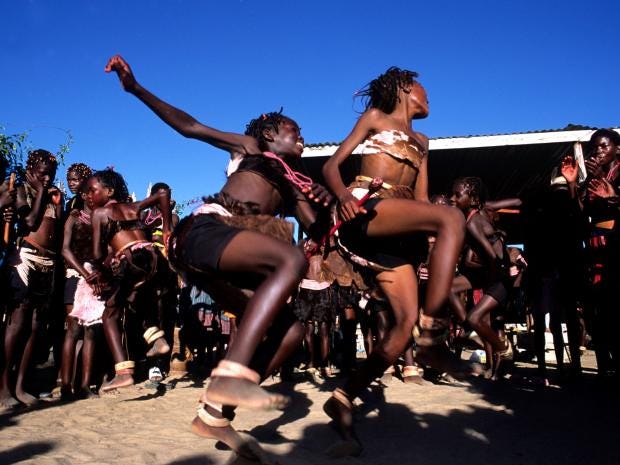


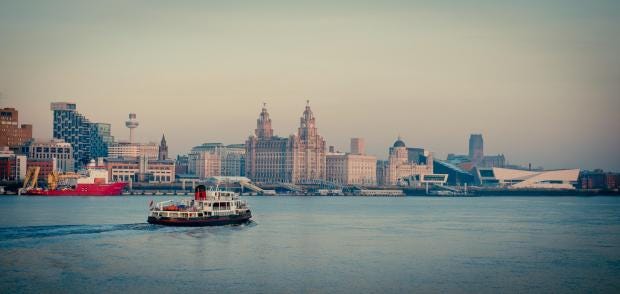
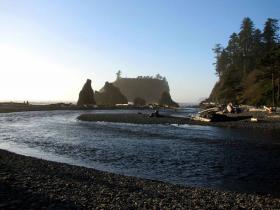
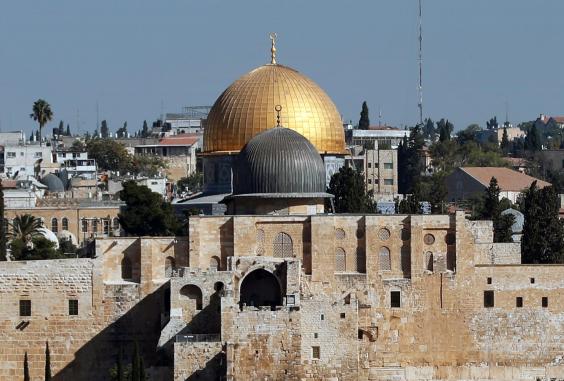
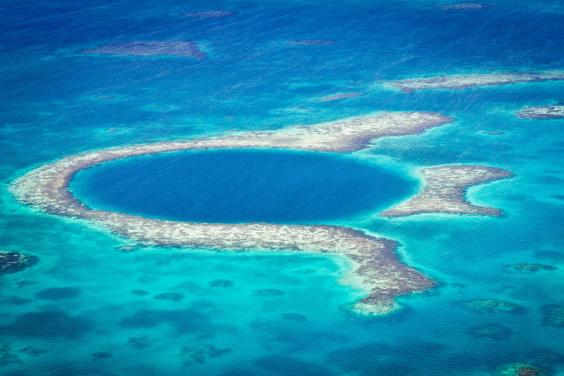
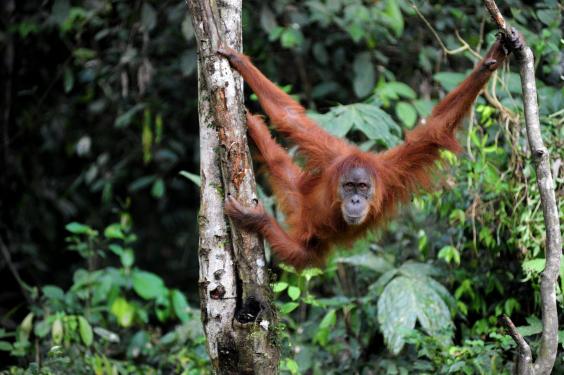
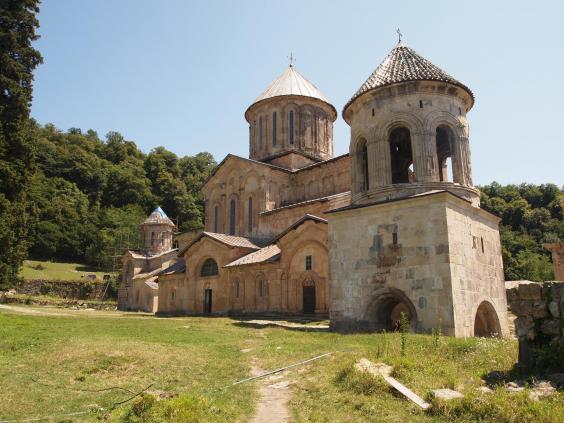
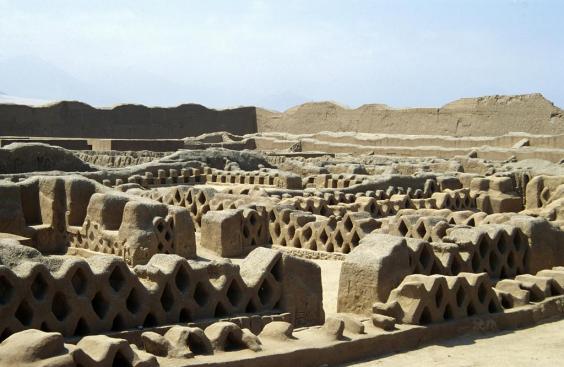
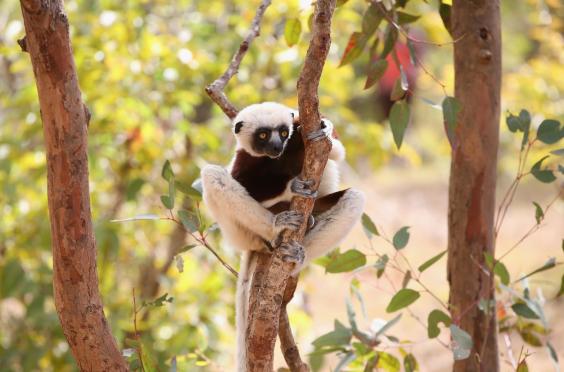















































































































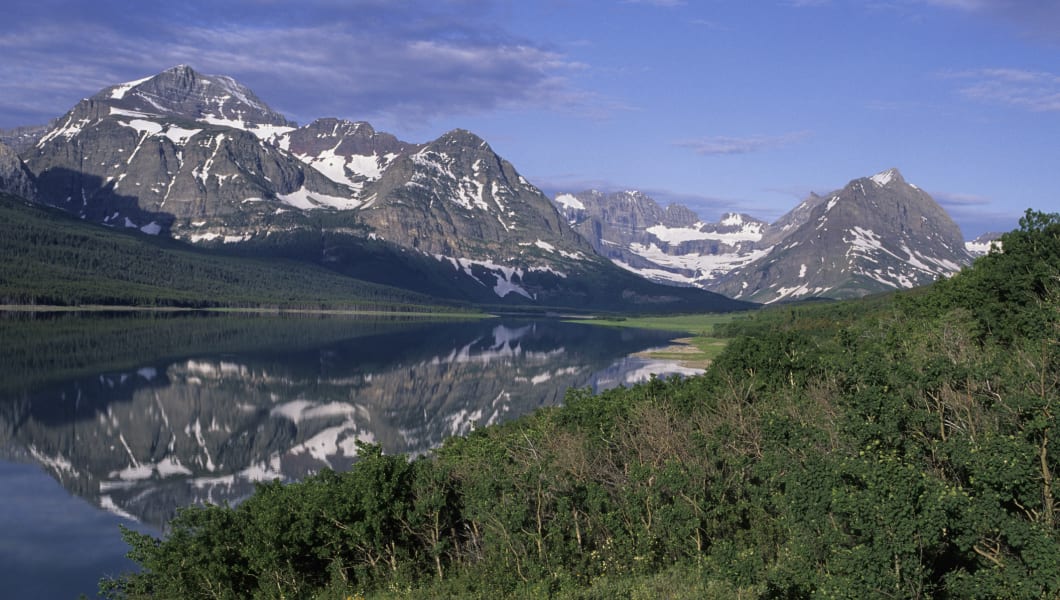
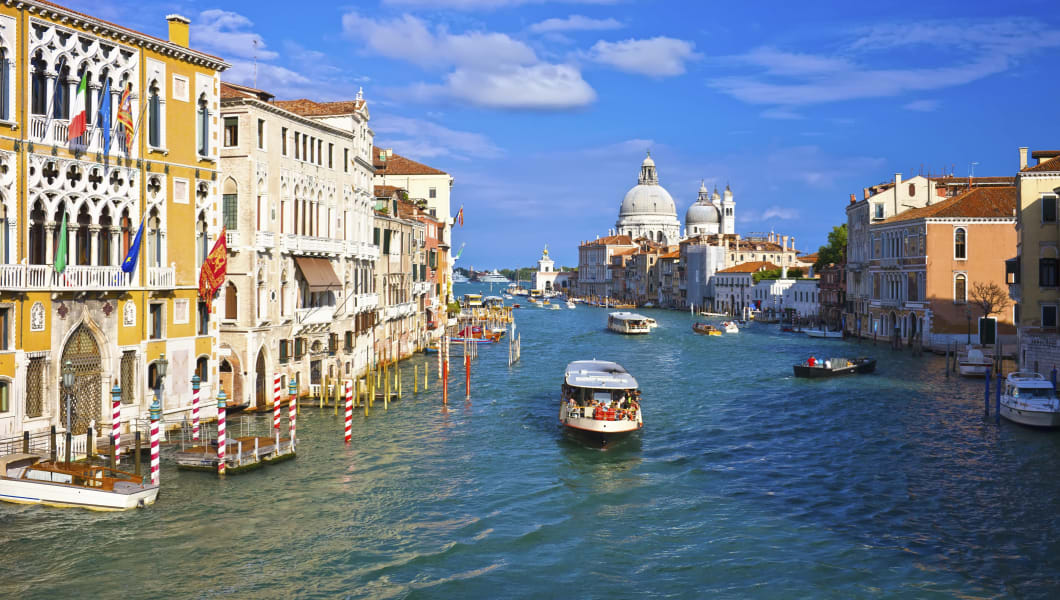 iSailorr/Getty
iSailorr/Getty Getty Images/Vetta
Getty Images/Vetta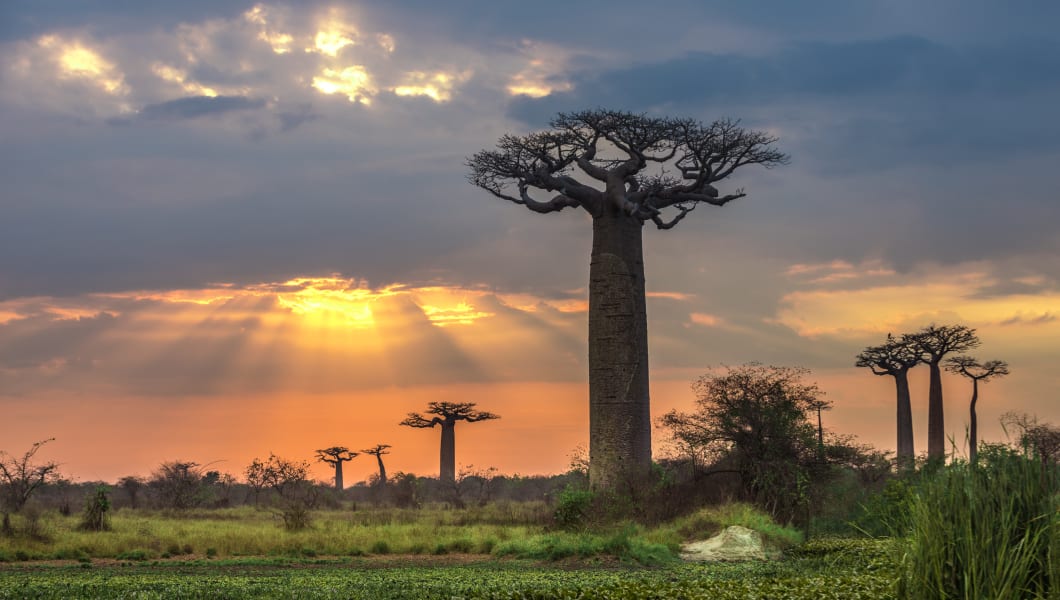 Getty Images/iStockphoto
Getty Images/iStockphoto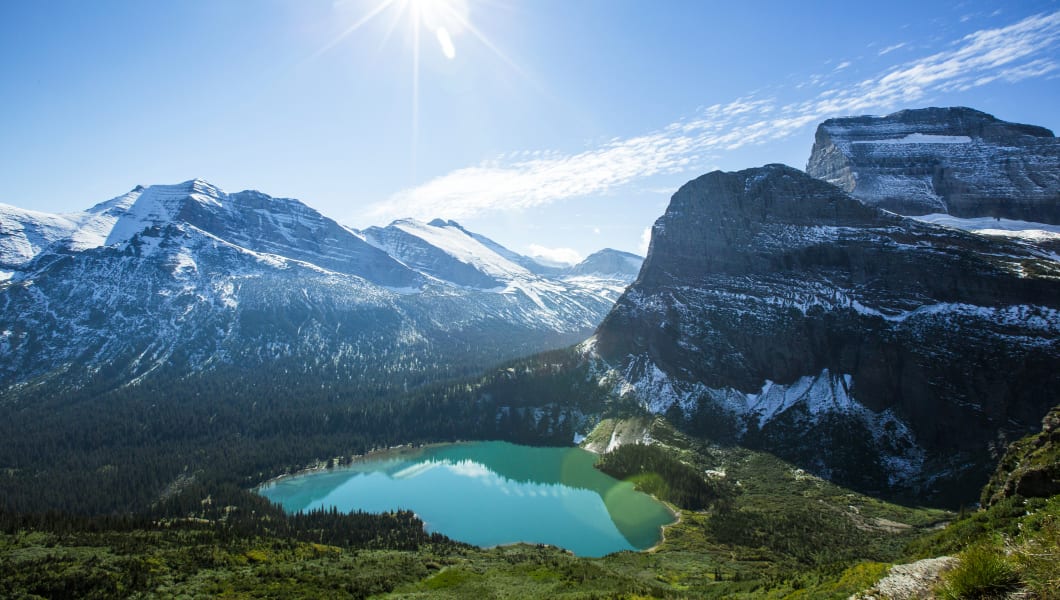 Jordan Siemens/Getty
Jordan Siemens/Getty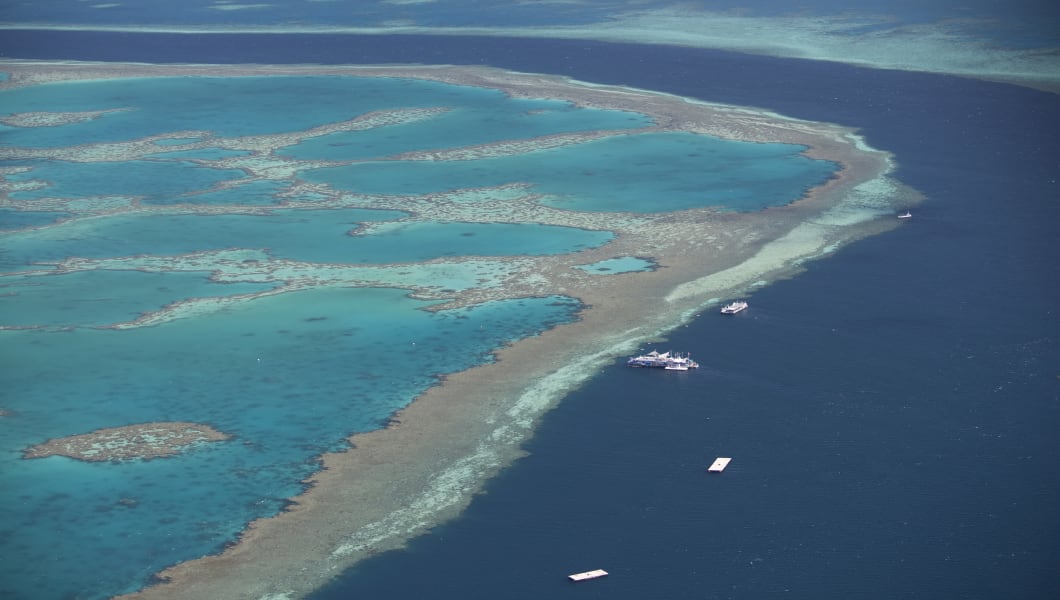 Getty Images/Vetta
Getty Images/Vetta


































































































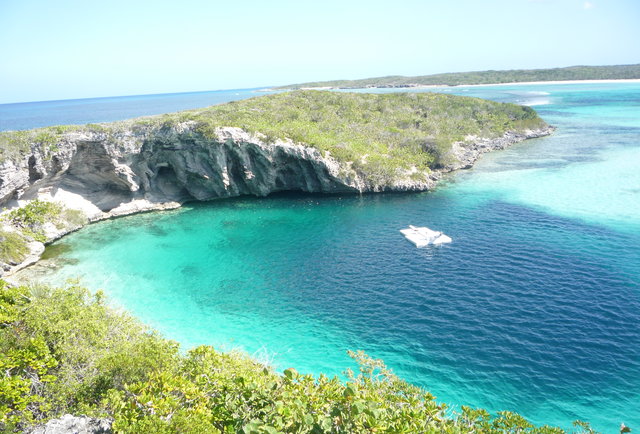
































 Spectacular views: Nestled high in the trees on a breathtaking stretch of Watamu beach in Kenya is the Watamu Treehouse
Spectacular views: Nestled high in the trees on a breathtaking stretch of Watamu beach in Kenya is the Watamu Treehouse The white, unusually-designed property looks like something from a fairytale, with its thatched roofs, mosaic glass inside and its panoramic views of the Indian Ocean
The white, unusually-designed property looks like something from a fairytale, with its thatched roofs, mosaic glass inside and its panoramic views of the Indian Ocean










 The luxury hotel is only accessible by foot and all guests must walk across a suspension bridge in order to reach reception
The luxury hotel is only accessible by foot and all guests must walk across a suspension bridge in order to reach reception There are four different spherical rooms in all at the Free Spirit Spheres, Vancouver Island, Canada, and each can comfortably sleep an adult couple, though amenities are relatively limited inside
There are four different spherical rooms in all at the Free Spirit Spheres, Vancouver Island, Canada, and each can comfortably sleep an adult couple, though amenities are relatively limited inside

 While the treehouses are almost entirely open air, all guests are connected to hotel staff via a two-way radio for their entire stay
While the treehouses are almost entirely open air, all guests are connected to hotel staff via a two-way radio for their entire stay An outdoor, riverside dinner can be set up alongside the Sabie River, which winds its way into Kruger National Park
An outdoor, riverside dinner can be set up alongside the Sabie River, which winds its way into Kruger National Park




 For those looking to get away from it all, the balconies at Tsala Treetop Lodge offer sweeping views of a lush forest
For those looking to get away from it all, the balconies at Tsala Treetop Lodge offer sweeping views of a lush forest Tsala lodge’s treetop suites and two-bedroom villas come with infinity pools on private decks, providing a perfect opportunity to unwind
Tsala lodge’s treetop suites and two-bedroom villas come with infinity pools on private decks, providing a perfect opportunity to unwind
 Perched among the branches in a rural spot near Bergerac is a unique treehouse, complete with four fairytale turrets and all built out of wood
Perched among the branches in a rural spot near Bergerac is a unique treehouse, complete with four fairytale turrets and all built out of wood The cosy interior of Châteaux dans les Arbres (Castle in the Trees) includes a double bed with a stained-glass window above, an electric heater for chilly evenings and a coffee machine for a morning pick-me-up
The cosy interior of Châteaux dans les Arbres (Castle in the Trees) includes a double bed with a stained-glass window above, an electric heater for chilly evenings and a coffee machine for a morning pick-me-up




 Can’t see the wood from the trees: From the outside this hotel room looks exactly like a bird’s nest but inside it is the height of luxury with enough room for a family of four
Can’t see the wood from the trees: From the outside this hotel room looks exactly like a bird’s nest but inside it is the height of luxury with enough room for a family of four




















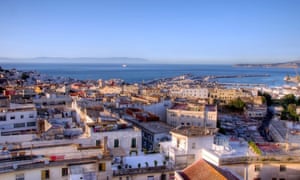
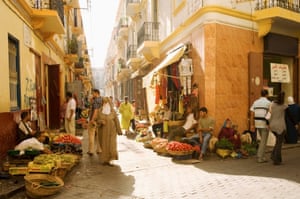






























































































































 Marrakesh is a city that is almost a 1,000 years old, so if you are wondering if there are a few historic sites to see in town, the answer is a resounding yes. Indeed, the high thick walls that surround the medina (old city) hide some real cultural gems you should make a point to see during your visit. While Moroccan architecture is a blend of many different design influences, it’s perhaps the Islamic imprint that is the most interesting. And lucky for you, all the characteristics of Islamic architecture are on display in palaces, tombs, and Koranic schools in Marrakesh. Meanwhile Marrakesh’s new city is home to some beautiful French and Islamic-inspired gardens, replete with fountains, towering shade trees and mosaic backdrops.
Marrakesh is a city that is almost a 1,000 years old, so if you are wondering if there are a few historic sites to see in town, the answer is a resounding yes. Indeed, the high thick walls that surround the medina (old city) hide some real cultural gems you should make a point to see during your visit. While Moroccan architecture is a blend of many different design influences, it’s perhaps the Islamic imprint that is the most interesting. And lucky for you, all the characteristics of Islamic architecture are on display in palaces, tombs, and Koranic schools in Marrakesh. Meanwhile Marrakesh’s new city is home to some beautiful French and Islamic-inspired gardens, replete with fountains, towering shade trees and mosaic backdrops.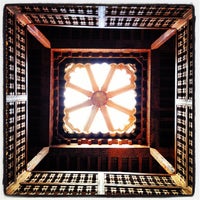 This is my very favorite building in Marrakesh. Did I mention it is a Koranic school? Yes, for more than four centuries the Ben Youssef Medersa played host to students hungry for knowledge in various subjects, including theology. The school, particularly the ground floor, is positively magnificent (and frankly, that’s an understatement). A beautiful center basin, incredible Moroccan mosaic tiled walls, hand sculpted plasterwork, and ornate wood work—all come together to enchant.
This is my very favorite building in Marrakesh. Did I mention it is a Koranic school? Yes, for more than four centuries the Ben Youssef Medersa played host to students hungry for knowledge in various subjects, including theology. The school, particularly the ground floor, is positively magnificent (and frankly, that’s an understatement). A beautiful center basin, incredible Moroccan mosaic tiled walls, hand sculpted plasterwork, and ornate wood work—all come together to enchant. The Saadian tombs are some pretty chic burial grounds, alright. Remnants of the Saadian dynasty that used to rule Marrakesh, Sultan Ahmed al-Mansour had this series of elaborate gilded tombs made to house his remains and those of his descendants (simple coffins apparently just wouldn’t do). Unfortunately, some of the tombs are in ruins but they are nonetheless very worth visiting. Bottom line: macabre but stylish.
The Saadian tombs are some pretty chic burial grounds, alright. Remnants of the Saadian dynasty that used to rule Marrakesh, Sultan Ahmed al-Mansour had this series of elaborate gilded tombs made to house his remains and those of his descendants (simple coffins apparently just wouldn’t do). Unfortunately, some of the tombs are in ruins but they are nonetheless very worth visiting. Bottom line: macabre but stylish.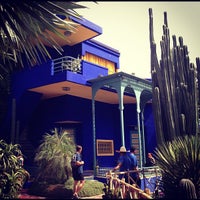 Unquestionably Marrakesh’s most fashionable (and glamorous garden), this jewel of a botanical garden in named after the French painter Jacques Majorelle who created it. The garden increased its chic-factor yet further when it was bought and restored by French fashion designer Yves Saint Laurent. There is an eye-popping variety of plants and trees from all over the world, punctuated by pergolas and fountains. The Berber museum on the Garden’s property is breathtaking—it’s where I go to take notes on Morocco’s fascinating Berber culture.
Unquestionably Marrakesh’s most fashionable (and glamorous garden), this jewel of a botanical garden in named after the French painter Jacques Majorelle who created it. The garden increased its chic-factor yet further when it was bought and restored by French fashion designer Yves Saint Laurent. There is an eye-popping variety of plants and trees from all over the world, punctuated by pergolas and fountains. The Berber museum on the Garden’s property is breathtaking—it’s where I go to take notes on Morocco’s fascinating Berber culture.
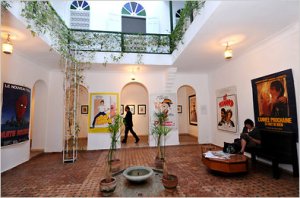 La Maison de la Photographie is one of my very favorite spots in Marrakesh. This gallery in a courtyard mansion in the old city features dozens of photos depicting Moroccan culture and history over the last 150 years or so. A documentary on Berber life by Daniel Chicault, shot 1956, runs on a loop on the second floor. The gift shop is also a great place to pick up prints and postcards. And when you are done seeing and shopping, lounge at the rooftop terrace cafe.
La Maison de la Photographie is one of my very favorite spots in Marrakesh. This gallery in a courtyard mansion in the old city features dozens of photos depicting Moroccan culture and history over the last 150 years or so. A documentary on Berber life by Daniel Chicault, shot 1956, runs on a loop on the second floor. The gift shop is also a great place to pick up prints and postcards. And when you are done seeing and shopping, lounge at the rooftop terrace cafe.




















































































































 Now, the sailor’s picturesque fishing village, called Anchor Bay, is open to the public seven days per week as an entertainment complex
Now, the sailor’s picturesque fishing village, called Anchor Bay, is open to the public seven days per week as an entertainment complex






























































